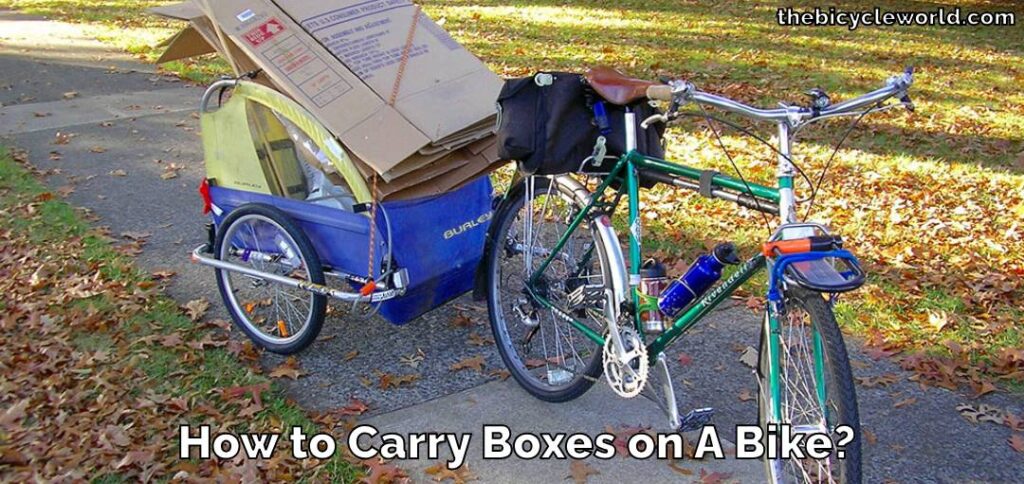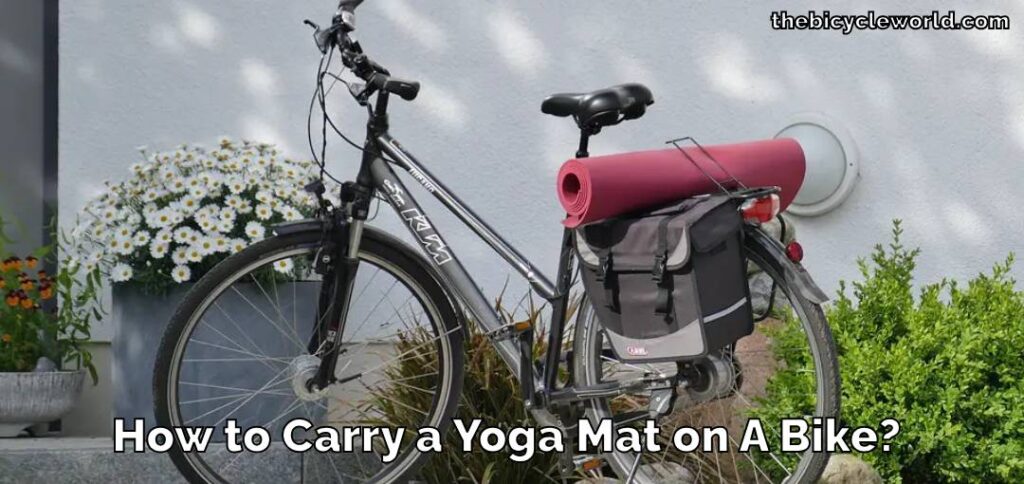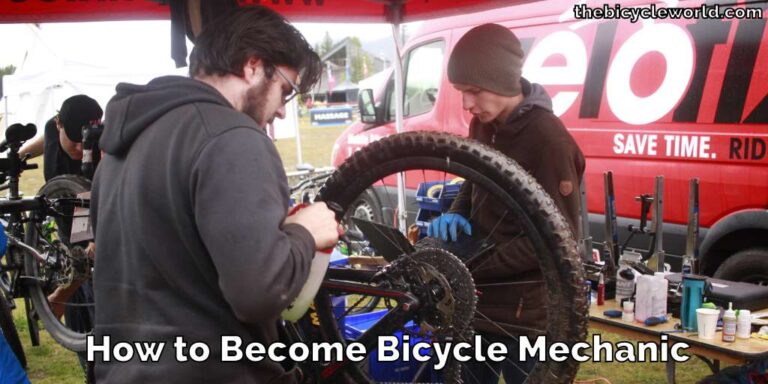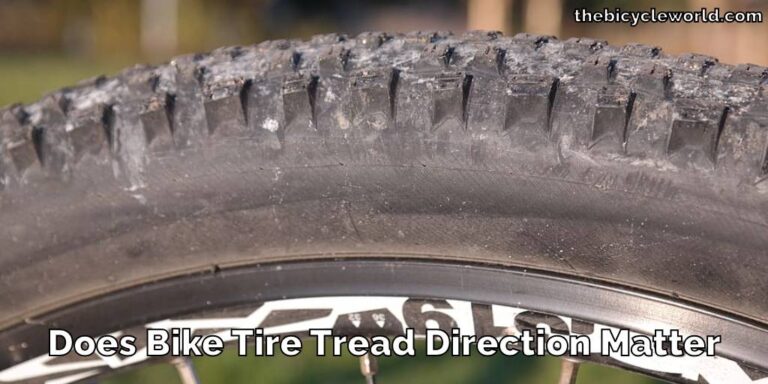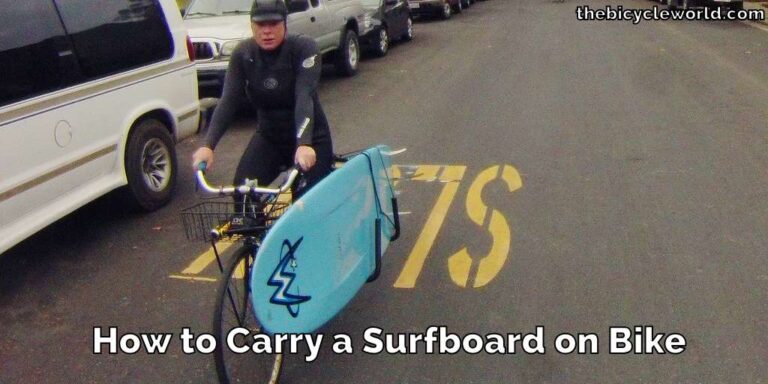How To Carry A Dog On A Bike?
Cycling with your dog isn’t just about moving from point A to B it’s an expedition that brings a whirl of joy, a dash of excitement, and a bundle of tail wags.

whether it’s a jaunt to the park, a visit to a pal’s place, or simply soaking up some sunshine, understanding how to carry a dog on a bike? securely bringing your pup along on your bike can transform a mundane ride into an exhilarating journey.
So, grab your helmet, leash up your buddy, and let’s pedal through the basics of making bike rides a blissful breeze for you and your canine companion.
How To Carry A Dog On A Bike?
Connect with Online Communities
The internet is a treasure trove of forums and social media platforms where cycling aficionados and dog enthusiasts converge. These online communities are ideal for posing questions, sharing experiences, and gleaning wisdom from others who have navigated the path of cycling with dogs.
Whether you’re curious about the best bike trailer for a smooth ride or seeking tips on using a cargo bike basket carrier for your pet, these platforms offer a wealth of information.
Engage with Local Cycling Groups
Participating in local cycling groups that welcome dogs can enhance your biking experience. Such groups not only provide practical advice on managing your ride with a dog but also introduce you to individuals who share your interests.

It’s a fantastic opportunity to discover the safest option for dogs on bikes, whether it’s a bike basket with a safety belt or a dog-specific bike seat.
Learn from Others’ Experiences
Every pet owner’s journey is unique and filled with valuable lessons and inspiring stories. Listening to others can uncover innovative solutions to challenges and inspire your own adventures. You might learn about the weight limits of different bike attachments or the advantages of electric bikes with battery-powered assist for easier rides.
Making Friends with the Bike
Before you and your dog can enjoy the excitement of cycling together, there’s an important first step: helping your dog get to know the bike while it’s safely stationary.

Think of it as introducing two friends. By placing your dog’s favorite treats on and around the bike, you’re creating a connection between your dog and the bike that’s positive and happy.
This encourages your dog to approach and sniff the bike at their own pace, without any pressure. It’s all about making the bike a familiar and comforting presence in your dog.
Removing fear and anxiety from the equation is key at this stage. By allowing your dog to become comfortable with the bike on their own terms, you’re laying a foundation of trust and curiosity. This is vital for a smooth transition to actually riding together.
Assessing Your Dog’s Suitability for Cycling
Before you start dreaming of a peaceful bike ride with your dog by your side, it’s important to really check if they’re ready for this activity. Consider your dog’s overall health, personality, and physical fitness. The truth is that not every dog is cut out for the thrill or speed of cycling.

For example, dogs with health problems, sitting for years, or breeding with a short nose (such as a bulldog or pug) may find riding a bike more stressful or challenging than fun It’s a good idea if you have a chat with your veterinarian to make sure your furry friend is so healthy and your bike is ready for the physical demands of being among the riders.
This step is crucial to ensure that your travels together are safe and enjoyable for both of you.
Gradual Introduction to Movement
After your dog has become friends with the bike while it’s standing still, the next step is to get them used to the idea of the bike moving. Begin this phase by simply walking the bike while your dog walks alongside on a leash.

This method lets your dog see and understand the bike in motion, but without the added element of speed, which can be overwhelming at first. It’s like showing them that the bike is just as safe when it’s moving as when it’s not. Spend a few days on this step, or however long it takes for your dog to look relaxed and confident around the moving bike.
This gradual introduction to movement is crucial. It allows your dog to adjust at their own pace, reducing the chance of fear or anxiety that sudden changes might cause. Plus, it builds on the trust and positive association established in the previous step, reinforcing the bike as safe and fun.
Assessing Your Dog’s Suitability for Cycling
Before you start dreaming of a peaceful bike ride with your dog by your side, it’s important to really check if they’re ready for this activity. Consider your dog’s overall health, personality, and physical fitness. The truth is that not every dog is cut out for the thrill or speed of cycling.
For example, dogs with health problems, sitting for years, or breeding with a short nose (such as a bulldog or pug) may find riding a bike more stressful or challenging than fun It’s a good idea if you have a chat with your veterinarian to make sure your furry friend is so healthy and your bike is ready for the physical demands of being among the riders.
This step is crucial to ensure that your travels together are safe and enjoyable for both of you.
Gradual Introduction to Movement
After your dog has become friends with the bike while it’s standing still, the next step is to get them used to the idea of the bike moving. Begin this phase by simply walking the bike while your dog walks alongside on a leash.
This method lets your dog see and understand the bike in motion, but without the added element of speed, which can be overwhelming at first. It’s like showing them that the bike is just as safe when it’s moving as when it’s not.

Spend a few days on this step, or however long it takes for your dog to look relaxed and confident around the moving bike.
This gradual introduction to movement is crucial. It allows your dog to adjust at their own pace, reducing the chance of fear or anxiety that sudden changes might cause. Plus, it builds on the trust and positive association established in the previous step, reinforcing the bike as safe and fun.
Share Your Journey
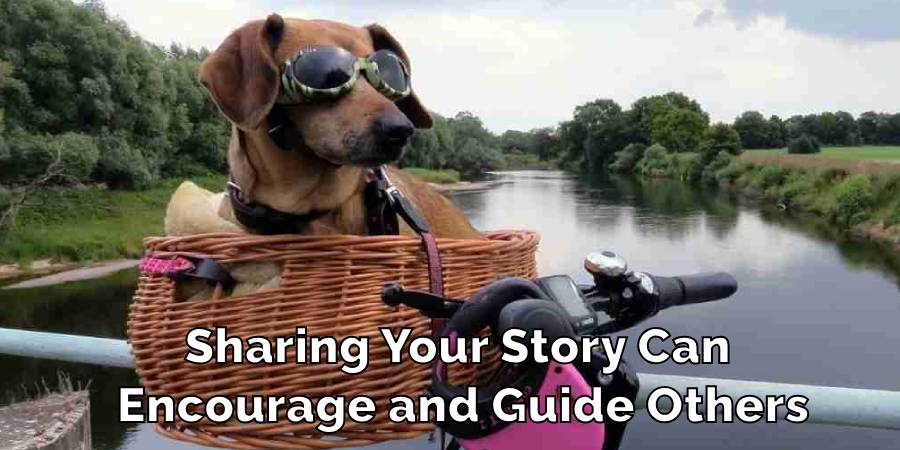
As you gain experience biking with your dog, sharing your story can encourage and guide others. Whether it’s the joy of watching your dog enjoy the breeze in a doggy cycling backpack or the convenience of a cargo bike basket carrier, your insights can be invaluable to the community.
Be Open to Advice
While it’s crucial to trust your instincts, embracing advice from seasoned bike enthusiasts can offer new perspectives. They might suggest a bike pet basket that perfectly fits your dog’s size or highlight the benefits of rear baskets with storage pockets for carrying your dog’s favorite snacks.
Incorporating your dog into your cycling adventures requires considering various factors like the type of bike that suits your needs—be it a classic model or an electric bike with battery-powered assist. Cargo bikes emerge as an ideal solution for larger dogs, offering ample space and stability.
For smaller pets, a bike basket or a specialized animal carrier ensures they can accompany you securely. Remember to pay attention to weight capacities to choose gear that can safely support your dog. Safety belts and dog-specific soft crates add an extra layer of security, making them essential for a worry-free ride.
Accessories like storage pockets for treats and water, or a cargo bike basket carrier, enhance the convenience of your outings.
Biking with your dog is not just a form of exercise; it’s an opportunity to create unforgettable moments together. Whether you’re exploring bike trails or navigating city streets, the right equipment and a thoughtful approach make all the difference.
From selecting the perfect bike attachment to learning the best bike riding techniques for your furry friend’s comfort, each step brings you closer to enjoyable and safe experiences on two wheels.
Remember, this journey with your dog is a shared adventure that goes beyond mere transportation—it’s about building memories and enjoying the beauty of the outdoors together. With careful preparation and the right gear, you and your dog can look forward to many happy miles on the road.
Choosing the Right Cycling Gear for Your Dog
Here’s a step-by-step guide to ensuring you choose wisely.
- Size matters: Start by looking at a dog bike box or carrier for small dogs. You want them to be sturdy enough to hold up well and with plenty of air to keep them cool. Make sure it will also be comfortable for them to sit for the duration of your ride.
- Consider passengers: If you have a large dog, a bike passenger might be a good choice. This gives them plenty of room to move around and sleep and makes the ride more enjoyable for them as well. Like a box, make sure the trailer is airtight and loose.
- Harness over collar: Always use a harness instead of a collar when attaching your dog to a bike. A harness distributes the pressure evenly across your dog’s body, making it safer and more comfortable for them, especially if they pull.
- Visibility is key: Investing in sensors is a smart move for you and your dog. Includes vest, belt, and reflective collar. It’s important to let drivers know, especially if you’re out in the evening or early morning.
Not only does taking the time to choose the right gear not only make the ride more enjoyable for your furry friend, but it also gives you the peace of mind of knowing it’s not safe
Helpful Hints for Training Your Dog to Cycle with You
Your bike adventure with your dog requires a bit of preparation to get you both excited about the ride. Here’s how to go about it:
- Start slow: Start on short drives to build your dog’s energy slowly. Like humans, dogs have to slowly get used to new exercises. This method helps prevent fatigue too quickly or possibly even injury.
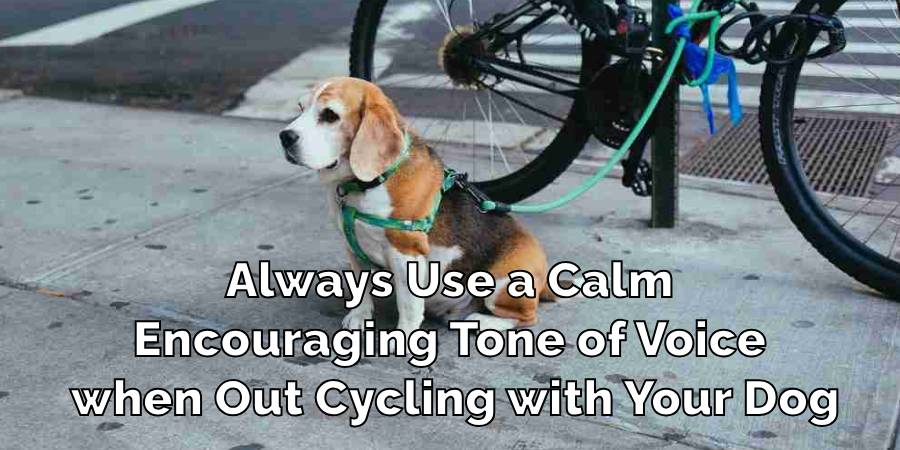
- Stay Positive: Always use a calm, encouraging tone of voice when out cycling with your dog. Your voice can make a big difference in how the program is perceived. If they associate your enthusiasm and supportive voices with cycling, they are more likely to enjoy it.
- Teach Commands: Training your dog to respond to commands when you’re both on the bike is critical to a safe and successful trip together. Commands such as “slow”, “stop”, or “left/right” can help guide your dog and prevent accidents.
- Reward Promotion: Don’t forget to reward your dog for good behavior and following commands while riding. A meal, praise, or even a short break to play can reinforce their positive attitudes and make the training program more enjoyable for them.
- Be Patient: Remember that each dog learns at its own pace. Some may cycle faster, while others will need more time to adjust. Patience and constant reinforcement are key to helping your dog become a happy cycling companion.
By following these tips, you will give your dog a positive and enjoyable biking experience. It’s all about making sure they feel comfortable, safe, and motivated to join you on your bike adventures.
Emergency Preparedness
It’s important to be prepared for any unexpected situations. Here’s how to make sure you’re prepared for emergencies:
Carry a First Aid Kit: Always carry a specialized first aid kit with you. This should include things like bandages, disinfectant wipes, and anything specific your dog may need. It’s a simple step that can make a big difference if you or your dog suffers a minor injury. Know
Your Zoo Clinic: Before you head out, take some time to test the veterinary clinics along your route. Knowing where to get help in case of an emergency can save valuable time if your dog needs medical attention.
Microchip and ID Tags: Make sure your dog is microchipped and wears a collar with ID tags that include your contact information. If you are separated, these can be crucial in helping your dog return to you safely
Preventive Action: Besides being ready to respond to emergencies, try to prevent them. Check your dog’s condition while riding, and make sure they are not too tired or overheated.
Make a Plan: Consider what you would do in emergencies. Whether it’s a minor injury, a lost dog, or something more serious, having a special plan can help you stay calm and responsive.
By taking these steps, you will not only be prepared for emergencies, but you will also have peace of mind knowing that you are doing all you can to provide your bike adventure with your dog it has been safe and fun. It’s all about enjoying the journey together, while also being smart and prepared for whatever comes your way.
Real-Life Experiences and Advice
Getting advice and feedback from people who ride with dogs can be very helpful. Online forums, local cycling clubs, and other sites are filled with people who have been where you are trying to be. They can offer advice, support, and concrete statistics that can guide you.
Hearing about successes and hiccups can give you a clearer idea of what to expect and how to handle the situation. Find online communities: The internet is full of forums and social media groups dedicated to cycling enthusiasts and dog lovers.
These spaces are perfect for asking questions, sharing your experiences, and learning from others. Join local bike clubs: If you can, joining a local bike club that welcomes dogs can be a great way to meet like-minded people.
Not only is it valuable insight but an opportunity to make new friends for you and your dog. Listen to the notes: Everyone and their dog’s journey is different, and there is much to be learned from listening. You may find intelligent solutions to problems you haven’t yet encountered or be inspired by the journeys of others.
Share your personal experience: As you and your dog accumulate more experience on the bike, feel free to share your story as well. Your insights can be exactly what new cyclists need to hear.
Be open to advice: While it’s important to trust your own judgment, it can be invaluable to be open to advice from those who have been through similar experiences, and may you offer ideas or solutions that you may not have considered.
By pooling the wisdom of other passionate dog bike enthusiasts, you not only prepare for the road ahead but you’ll be connected to a community that shares your passion crossed your surroundings as well. This exchange of knowledge and experiences not only prepares you for potential challenges but also adds depth and etc.
Conclusion
Cycling with your dog is a rewarding experience that strengthens your bond and enriches your adventure. It takes preparation, patience, and the right gear, but the fun of sharing a car with your furry friend is unmatched.
Remember that every dog is unique, so tailor the experience to your dog’s needs, ensuring their health and safety at every turn. As you pedal together, don’t just take the distance; You will have unforgettable moments with your faithful partner.
Read Also – Bicycle Tyre Valve Types
How to Carry Bike on A Scooter?
The swift agility of a scooter with the pedal-powered pleasure of a bike isn’t just…
Where To Put Keys While Cycling?
Hey there, cyclists! Keys might seem like a simple thing, but listen up – keeping…
How to Lock Multiple Bikes Together?
Heading out with friends or family for a bike ride? Great idea! But let’s not…
How to Carry Boxes on A Bike?
Choosing your bike over a car is kind to the earth because you’re not causing…
How to Carry Musical Instruments on A Bike?
On a venture where the harmony of biking intertwines with the rhythm of music, I…
How to Carry a Yoga Mat on A Bike?
Mixing cycling with yoga offers a unique blend of benefits, including a heart-healthy warm-up from…




